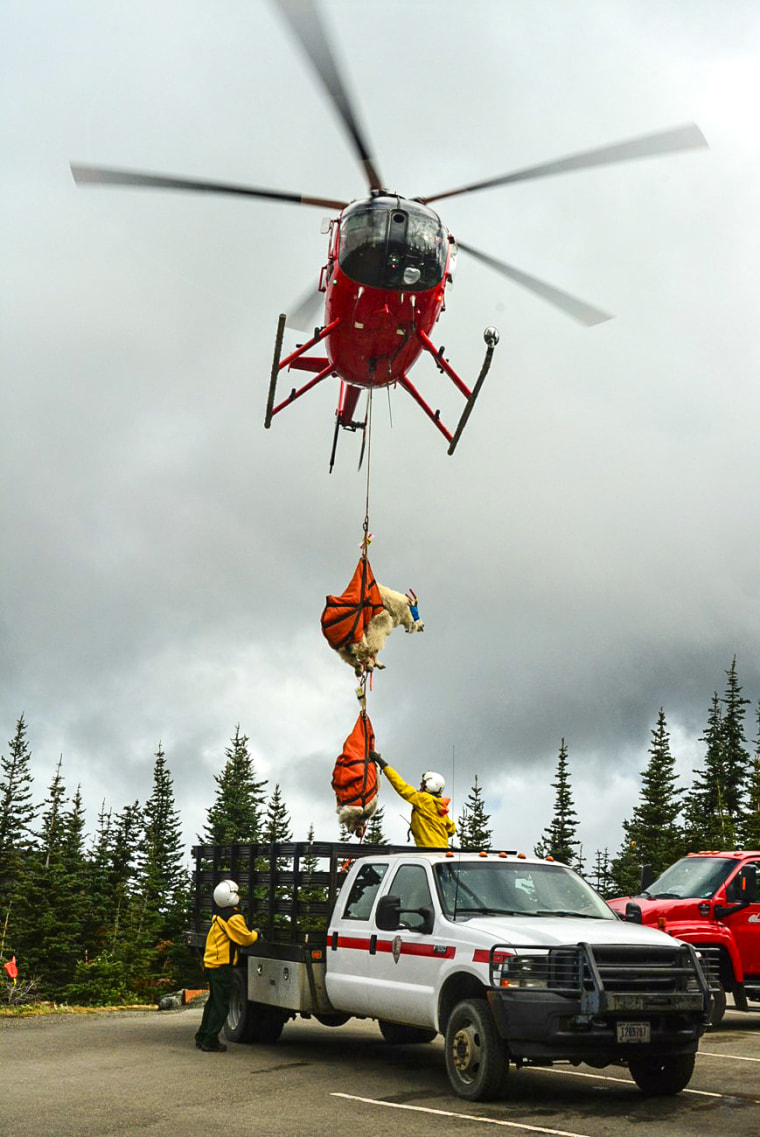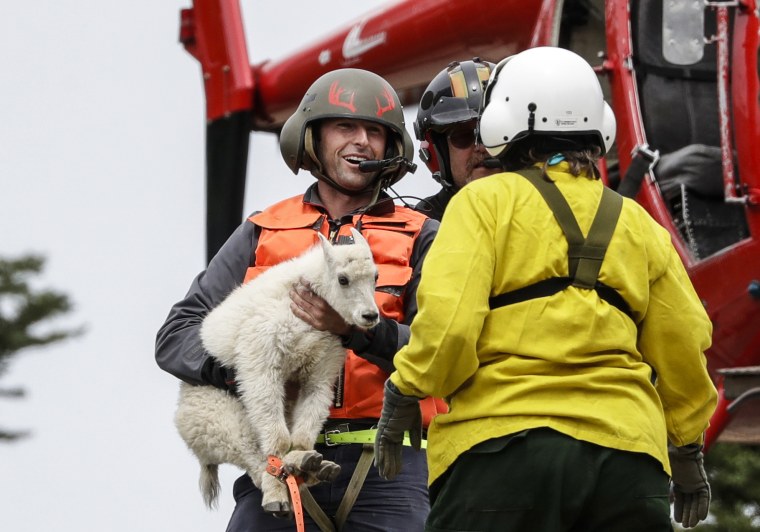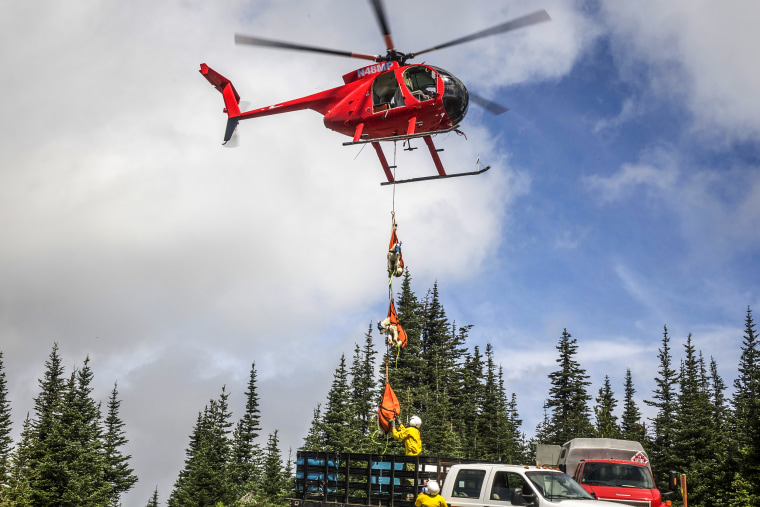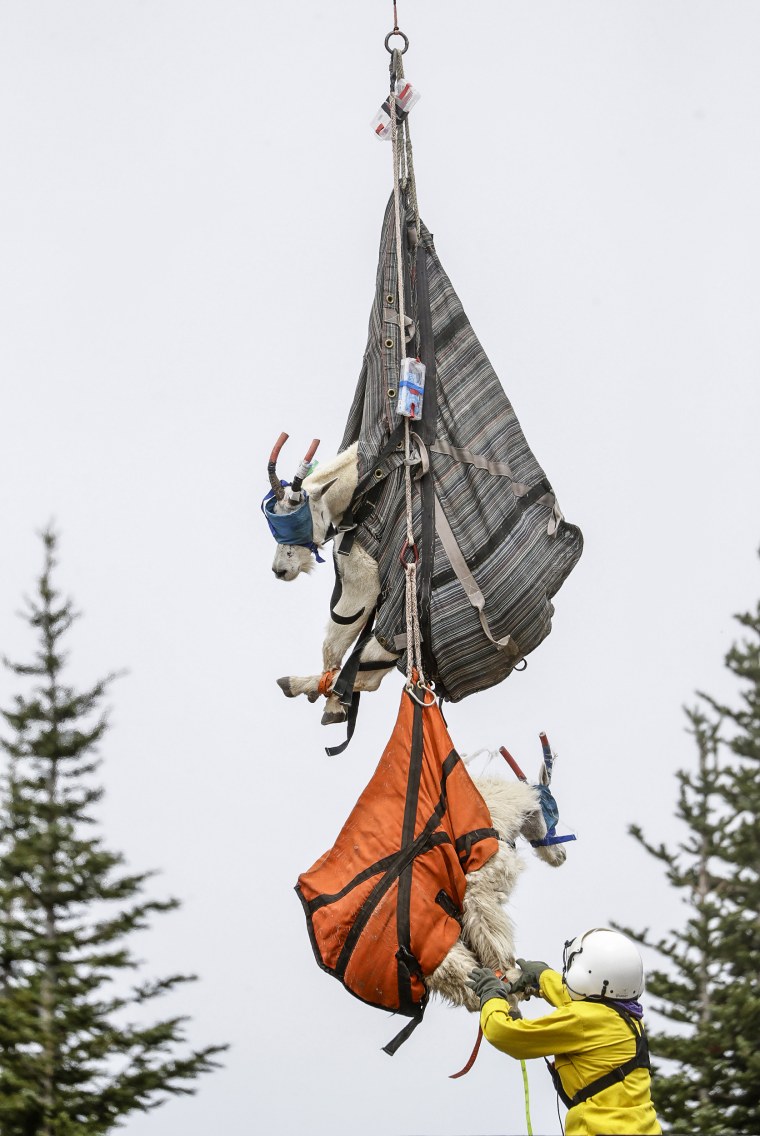begin quote from:
https://www.nbcnews.com/science/environment/mountain-goats-washington-flown-cascades-died-rcna153090
Hundreds of mountain goats were flown to a new home. Very few survived.
For three summers, wildlife managers wrestled mountain goats in Washington state’s Olympic National Park, blindfolded them and then flew them into the far reaches of the state’s Cascade Range — an ambitious project to boost the goat population in an area where they once were common.
The researchers released a total of 325 goats into the Cascades from 2018 to 2020.
Today, most of the goats scientists had been tracking are dead.
“We were disappointed survival was as low as we found it was,” said Rich Harris, a now-retired state wildlife biologist who led the translocation project.
It’s difficult to know exactly how many mountain goats have survived because not all were tracked. But in a study published in September, Harris found that the probability of a translocated goat living from year-to-year was just 56%. In a sample of 217 translocated goats, 165 had died by the end of 2022.
The Everett Herald reported that wildlife biologists working with tribal nations could only find a few living mountain goats from the groups they had been tracking.
The goal of the effort was to foster a mountain goat rebound in the Cascades, where the species’ numbers have fallen dramatically after decades of overhunting. At the same time, the project would eradicate mountain goats from the Olympic Mountains, where they were not native, and, according to some officials, harmed plants specific to the region. In 2010, a hiker was gored and killed in a rare attack — the mountain goat was too familiar with the presence of people.
But the outcome of the project has revealed the degree to which climate change is rapidly transforming the rugged alpine landscapes of the West — and how humanity’s best-laid plans for wildlife increasingly face longer odds as weather extremes become more likely.

Researchers knew the relocated mountain goats would have a tough first winter and expected some to die. They now suspect that the effects of climate change have taken a toll on mountain goat survival rates — and native goats are struggling, too.
Off the bat, the translocated goats had it tough.
“You pick them up and drop them in unfamiliar territory, there’s initial trauma in the move. And finding your way in unfamiliar territory is going to be a challenge,” said David Wallin, a professor of environmental sciences at Western Washington University.
But that wouldn’t fully explain the poor results. So Harris conducted an analysis that included native mountain goats in the Cascades for comparison — the findings showed their population is declining, too.
“While the translocated animals didn’t do very well, they didn’t do any differently than the native animals,” Harris said, adding: “It’s been a dramatic decline. Weather factors related to climate are having an effect.”
His study found that changing weather conditions linked to climate change have correlated with mountain goats’ survival rate over the past 20 years. The goats benefit from a cool spring with steady snowmelt, which leaves alpine meadows rich with nourishment throughout the summer. But in recent years, they’ve received deep snowfall, a rapid melt in spring and arid summer droughts.
“The take-home message there is wow — I’m not sure how goats are going to be doing over the next decade, two or three,” Wallin said.
The Washington Department of Fish and Wildlife estimates that the state’s mountain goat population fell from 1,537 in 2015 to 917 in 2022.

State, federal and tribal biologists spent years formulating their plan to relocate the goats, convincing the public and, finally, carrying out the complicated logistics.
The plan called for capturing and moving at least half the goats’ population in the Olympics to the Cascades, and then killing the goats they couldn’t relocate.
For three summers, helicopters cruised over the snow-capped peaks of Olympic National Park. Workers shot the goats with leg-trapping nets or darts, then corralled them, blindfolded them, dosed them with a tranquilizer, placed them in harnesses and flew them away.
The goats received veterinary care and were transported by refrigerated truck and ferry across Puget Sound, to be released in the Cascades.

In the end, veterinarians euthanized six goats, 23 died during capture and three died during transport. Sixteen kids were taken to zoos, according to Patti Happe, an Olympic National Park wildlife biologist, who has since retired.
Most of the remaining goats in Olympic National Park were killed, as per the plan: around 175. The effort ended in 2022, and Happe said visitors reported only two credible reports of mountain goats last year.
Most of the animals were 3 to 7 years old when they were relocated. Mountain goats can live into their early teens. Many were given GPS collars designed to track their whereabouts.
Harris said he knew the goats would struggle during their first winter but expected to see their survival rate climb to nearly normal — roughly 80-90%. However, the newcomers never seemed to stabilize.

Alpine environments are changing fast as global warming pushes temperatures higher, Happe said. Charismatic species like mountain goats — often photographed by hikers — are easy-to-notice examples of trends that are also threatening marmots, pikas and other mountain species.
“They’re a good symbol of what’s going on,” Happe said. “Climate change — it kind of threw us a bit of a curve ball. I don’t think we thought it was going to be hitting us like this.”
However, the biologists behind the translocation project said they don’t view it as a failure or wasted effort. Happe said wildlife managers spotted some of the translocated females with kids, which suggests they might have reproduced and introduced new genes to the overall population.
It’s still too early to know whether the species will rebound, so there is still hope for the goats.
“Despite some of our disappointments, I don’t think we did the wrong thing at the end of the day,” Harris said. “It might turn out to have been a helpful thing to do, but it’s not going to stop the climate from changing.”


No comments:
Post a Comment